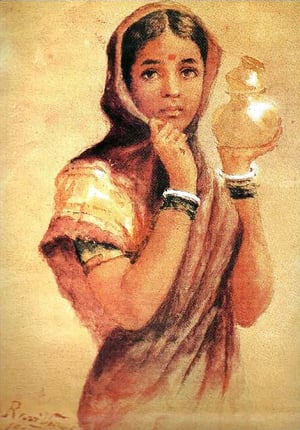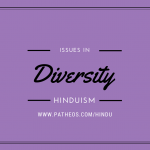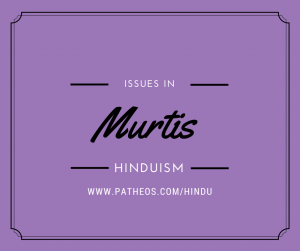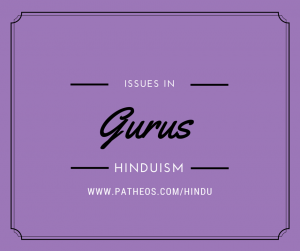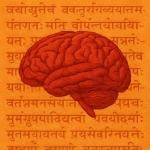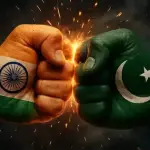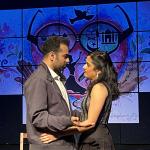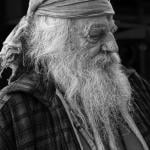Editors’ Note: This article is part of the Patheos Public Square on Heroes of 2014. Read other perspectives here.
Hollywood loves the Hero’s Journey. It started with the writings of Joseph Campbell, who imagined that all of the world’s storytelling could be summarized into one (suspiciously Christian) monomyth. This has led to a tried-and-true blockbuster screenwriting formula.
Maureen Murdock attempted to address the deficits in Campbell’s work in her 1990 book The Heroine’s Journey. It arose after a conversation in which Murdock asked Campbell about women’s stories and he stated:
“In the whole mythological tradition the woman is there. All she has to do is realize that she’s the place that people are trying to get to. When a woman realizes what her wonderful character is, she’s not going to get messed up with the notion of being pseudo-male.”
Murdock was “stunned” and found his answer “deeply unsatisfying.” Men are heroes (and people!) according to Campbell, while women are just there. Due to his ubiquitous influence in the world of screenwriting manuals, the Hero’s Journey gets glorified while the Heroine’s Journey gets overlooked.
In the Hero’s Journey, often the hero has to be dragged into his heroism; his life was comfy cozy and he wants it to stay that way. In the Heroine’s Journey, the illusion of a comfortable safe existence has already been shattered and the heroine is spurred into action because there is no normal to stay cocooned in.
An Afghan woman, Reza Gul, was spurred into action when her son was killed in an ambush by the Taliban. She took her daughter Fatima and her daughter-in-law Seema and killed 25 Taliban fighters in a seven-hour gun battle.
Eighteen year old Mercy Paul was kidnapped from her school in Nigeria by Boko Haram. Her school was burned and she and the 275 other girls were told they’d be killed if they tried to get away. They were loaded onto a truck and driven into the forest. Most of them have been forcefully converted from Christianity to Islam and sold as “brides” or sex slaves. Mercy Paul was one of only 57 to escape.
Another escapee thought she’d arranged with her friends for all of them to jump together and run away while their kidnappers were busy killing villagers along the way. She jumped, only to look back and see that her friends were still on the truck, crying. They were too afraid to go with her and she had to run to safety without them.
Not every enemy is a man with a gun. Some battles are fought in hospitals and medical tents. Nurses Nina Pham and Amber Vinson risked their own lives nursing Ebola patient Thomas Duncan. They aren’t the only ones: Doctors Without Borders (Medecins Sans Frontieres) and other groups travel to the heart of the outbreak to treat the afflicted.
Some people inspire hope by repurposing the instruments of war into symbols of peace. A Palestinian woman in the village of Bilin created a garden by planting flowers in spent tear-gas grenades from the conflict between the Israelis and Palestinians.

This is not the only example of gardening as an act of heroism. Starhawk, an eco-feminist and longtime activist, teaches permaculture as a way of not only helping the environment, but improving and empowering the lives of individuals and communities.
Dr. Vandana Shiva is another eco-heroine. She is the founder of Navdanya, a “network of seed keepers and organic producers spread across 17 states in India.” She promotes fair trade, biodiversity, conservation, organic farming, food sovereignty, and “the rejuvenation of indigenous knowledge and culture.”
Starhawk and Dr. Vandana Shiva are only two of a growing number of people who realize the vital power of communities taking charge of their own food. Across the United States, several inner cities schools are growing organic gardens and at-risk children are being taught to cook nutritious food. Nutritionist Marion Nestle, author of the book and blog Food Politics, educates the public about how governmental policy affects the foods available and how they’re marketed, regulated, and labeled.
At the end of the day, we all have to eat, and the people who feed us don’t often make the lists of heroes, though eating is the foundation of everything else that we do. Cat Daniels, a 53-year-old woman in Ferguson, was described by USA Today as “cooking and serving as the hen mother for countless young people on the front lines of the protest movement that blossomed here after the shooting death of an unarmed black teenager in August.”
Screenwriters seek protagonists who face the Taliban in shootouts, or escape Boko Haram, or journey into the midst of danger to cure disease. They miss the quieter heroes who plant flowers or organic produce in places where hope has dwindled. They can sometimes create a plot around those who battle corporations and food lobbyists to ensure all of us a safe dinner, but what of those who simply dish out food on the front lines of conflicts?
Not all of these women’s lives fit the format of the Hero’s Journey, but they are more than just there. They face challenges with grace. They learn to use their voices to create change. They stand strong and resilient in the face of adversity. They know that the future is created from deceptively mundane ingredients: healthy food and open study books. As Hajara, another girl who escaped Boko Haram, told BBC News, “They think they’ve ruined me, but God willing, they haven’t ruined me. I’ll continue with my education.”
That’s what an unquenchable spirit looks like. It faces the enemy and says, “You haven’t defeated me. I’m going to continue.” Day by day, in dramatic ways or quotidian ways, they continue.


